Hey Folks,
As I’m updating the website, I’m redoing the Image of the Month pages, and won’t be writing content on the old (now deleted) pages – so I’m going to transfer some of the past notes I’ve written on the image of the month pages to the blog, that way it’s all in one place, searchable, and much better organized. Here’s another piece I wrote a while back about backpacking and photography. Some of the issues are how to pack camera gear, how to keep camera gear weight down, the hassles of digital cameras, and how to ‘get your shots’.
a) Packing camera gear: I think this is a HUGE part of a good backcountry photography trip. In short, I don’t really have ‘the answer’.
Well, not yet, anyway. 🙂 It’s largely a matter of personal preference, but there is probably one standard that ought apply. Keep it protected.
First and foremost, your gear HAS to be well padded. It’s too easy to damage expensive camera gear, so be sure to pad your camera bag or whatever you carry it in well.
I usually wrap my telephoto in a fleece, and carry my camera body and shorter bodies, filters, etc, in a small camera bag – some kind of LowePro bag. All of it goes in my main backpack. Sometimes I just carry a small day pack inside my backpack, with the camera bodies, etc, stuffed inside it. This makes for a a nice portable and protected unit if I do any dayhikes, without having to bring my larger backpack.
If needed, I’ll pad gear with a t-shirt, fleece hat, etc. Either way, just be sure to pad it well.
b) Keeping camera weights down. Oh I WISH I knew the answer to this one! Lately, I’ve been carrying only 1 camera body (a boon of the digital age), small variable aperture lenses (not the heavier f2.8 lenses), and trying to leave filter at home when possible.
I still can’t get past the thought of having camera problems though, so I’ll probably be carrying 2 bodies on most of trips in the future. I like the Sigma 500mm for a telephoto, because it’s noticeably smaller and lighter than the Nikon and/or Canon equivalent.
Other options are a 400mm f5.6, or a 80-400mm f5.6 lens .. I am very tempted to get one before this summer! I use a Gitzo #1325 carbon fiber tripod, but will probably get another smaller lighter one just for backpacking this season. With a smaller ballhead as well, I could probably shed nearly 3 pounds just in a new tripod and head system.
c) Digital. Not having to carry film is outweighed by bringing a portable Hard Drive (I use the PD7X), spare camera batteries, and the added weight of modern dSLR cameras. I save some bulk, but the weight is probably similar. Digital cameras are great in bad weather, sitting inside a tent viewing the images I’ve shot so far relieves some of the boredom!
I also find the initial editing process for digital images MUCH slower than slides .. I’m so far behind on getting images caught up and added to my database it’s ridiculous! Hopefully a workflow will sort itself out soon that allows me to keep up. In the meantime, I find it really beneficial to edit immediately after a trip .. otherwise the work piles up and I never get caught up.
d) How to get your shots: this is probably the most important one. I think one of the big things is just having your gear accessible.
Keep it handy, when possible, and try to be deliberate about stopping to shoot ANYTHING that catches your eye. better to stop, get your gear out, and decide against a shot, than to keep on walking and then regret it later. I’ve learned that lesson the hard way. Trust me – when you see something, anything, that catches your attention, stop, drop your pack, and get your camera out. It’s more important than getting to camp.
Shoot it, and shoot it again. bring extra film or memory cards, and be sure you try different compositions and approaches to your photographs. You can always delete what you don’t like later!
I hope this brief run down helps. Feel free to email me if you have any questions or tips- photography can be a great way to remember your trips, so make the most of it. See ya.
Cheers
Carl Donohue
PS – Oh, yeah, the photo here is from a trip on the Canning River in 2006, in the Arctic National Wildlife Refuge, or ANWR, Alaska.




